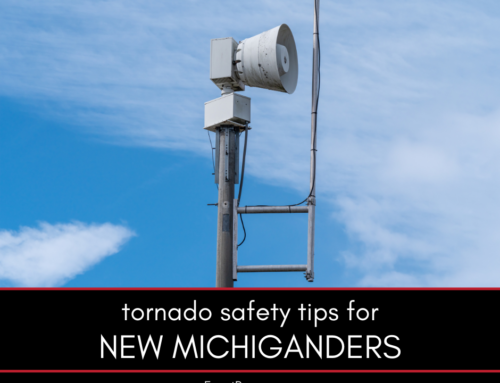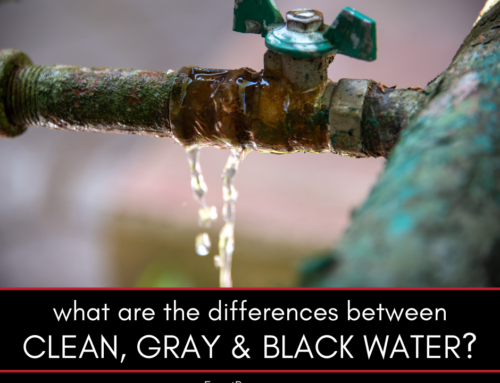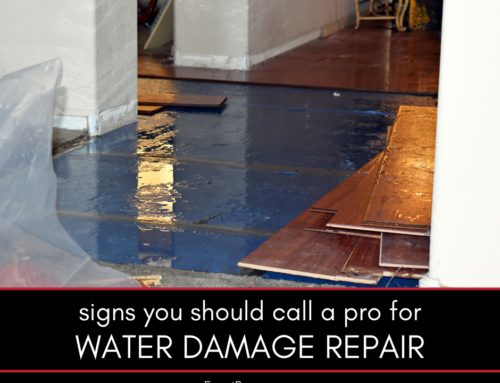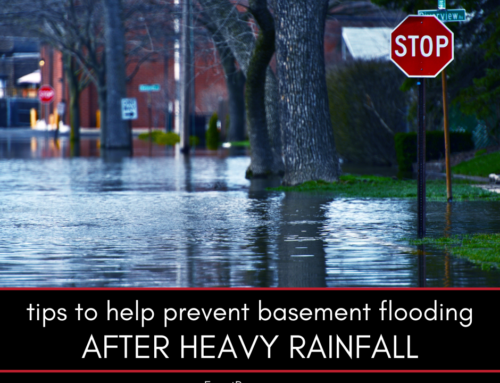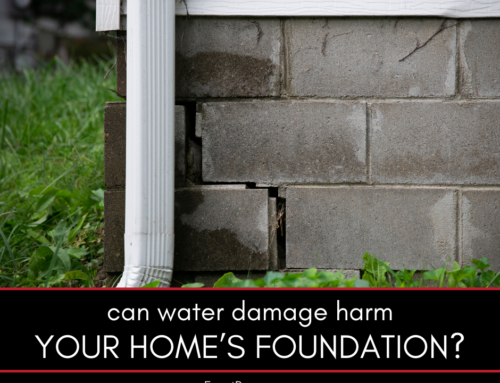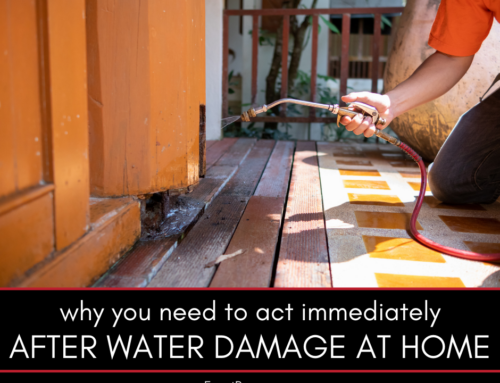Water damage can be insidious, often hiding in places where it’s not immediately visible. Recognizing the signs of hidden water damage is crucial for preventing further issues like mold growth and structural damage. This guide will help you identify hidden water damage and understand when to call a professional for help.
How to Spot Hidden Water Damage
This guide provides detailed steps for spotting hidden water damage in your home. It covers the following:
- Understanding the risks of hidden water damage
- Common areas where water damage occurs
- Signs of hidden water damage
- Using tools to detect moisture
- Potential health risks, including mold growth
- When to call a professional for water damage restoration
Here’s a closer look at each.
Understanding the Risks of Hidden Water Damage
Hidden water damage poses significant risks to your home and health. Unlike visible damage, hidden water damage can go unnoticed for extended periods, leading to severe problems. Over time, unnoticed water damage can compromise the structural integrity of your home, weaken building materials, and create an environment conducive to mold growth. Mold thrives in damp conditions and can begin to grow within 24 to 48 hours of water exposure, posing health risks such as respiratory problems, allergies, and infections. Addressing hidden water damage promptly is essential to prevent these long-term issues.
Related: Expert advice on water damage, fire damage, mold and more
Common Areas Where Water Damage Occurs
Certain areas in your home are more prone to water damage. Knowing where to look can help you spot potential problems early.
Basements and Crawl Spaces: These areas are highly susceptible to water damage due to their proximity to the ground. Look for signs of moisture, standing water, or a musty odor.
Attics: Leaks in the roof can lead to water damage in the attic. Inspect the attic for damp insulation, water stains, and mold growth.
Bathrooms: Bathrooms are prone to water damage due to the constant use of water. Check around sinks, tubs, showers, and toilets for signs of leaks and moisture.
Kitchens: Leaks from sinks, dishwashers, and refrigerators can cause hidden water damage in kitchens. Look for water stains, warped cabinets, and damaged flooring.
Laundry Rooms: Washing machines can cause water damage if they leak or overflow. Inspect the area around the washing machine for water stains and dampness.
Walls and Ceilings: Water damage can occur behind walls and ceilings due to plumbing leaks or roof leaks. Look for discoloration, bubbling paint, and soft spots.
Related: Sewage backup in your home
Signs of Hidden Water Damage
Recognizing the signs of hidden water damage can help you address the issue before it becomes a major problem.
Water Stains: Discoloration or stains on walls, ceilings, and floors are common signs of water damage. Look for yellow, brown, or dark spots.
Bubbling or Peeling Paint: When water gets behind paint, it can cause the paint to bubble, peel, or crack. Inspect painted surfaces for these signs.
Warped or Buckled Flooring: Water damage can cause hardwood, laminate, and vinyl flooring to warp or buckle. Check for uneven or soft spots in the flooring.
Musty Odor: A persistent musty smell indicates the presence of mold or mildew, which often accompanies water damage. Follow your nose to locate the source.
Sagging Ceilings or Walls: Water damage can weaken structural materials, causing ceilings and walls to sag or bulge. Inspect these areas for any irregularities.
Increased Utility Bills: A sudden spike in your water bill may indicate a hidden leak. Monitor your utility bills for unexplained increases.
Mold Growth: Visible mold is a clear sign of water damage. Mold can appear as black, green, or white patches on walls, ceilings, and other surfaces.
Using Tools to Detect Moisture
Several tools can help you detect hidden moisture in your home.
Moisture Meters: These devices measure the moisture content in building materials. Use a moisture meter to check walls, floors, and ceilings for hidden moisture.
Infrared Cameras: Infrared cameras detect temperature variations, which can indicate the presence of moisture behind walls and ceilings. These cameras can help you identify hidden water damage without invasive procedures.
Hygrometers: Hygrometers measure the humidity levels in the air. High humidity levels can indicate the presence of hidden moisture and potential water damage.
Water Leak Detectors: Place water leak detectors in areas prone to leaks, such as basements, bathrooms, and under sinks. These devices sound an alarm when they detect moisture.
Potential Health Risks, Including Mold Growth
Hidden water damage can create an ideal environment for mold growth, which poses significant health risks. Mold releases spores into the air that can be inhaled, leading to respiratory problems, allergic reactions, and infections. Individuals with asthma, allergies, or weakened immune systems are particularly vulnerable to the effects of mold exposure. Long-term exposure to mold can result in chronic respiratory issues and other health problems. Addressing water damage promptly and thoroughly is essential to prevent mold growth and protect your health.
Related: How does homeowners insurance work after a disaster?
When to Call a Professional for Water Damage Restoration
While some minor water damage can be handled by homeowners, significant or hidden water damage requires professional intervention. Call a professional if you encounter any of the following situations:
- Visible mold growth or a persistent musty odor
- Extensive water stains, warping, or structural damage
- Sagging ceilings or walls
- Unexplained spikes in your water bill
- Dampness or standing water in basements, attics, or crawl spaces
- Water damage affecting electrical systems
Professionals have the expertise, tools, and equipment to thoroughly assess and address water damage. They can identify hidden moisture, prevent mold growth, and restore your home to its pre-damage condition. Professional restoration services provide peace of mind and ensure that the issue is resolved safely and effectively.
FAQ About Spotting Hidden Water Damage
Check out these commonly asked questions about spotting hidden water damage. If you don’t see your question here, please call our office and we’ll find you the answers you need.
How Can I Tell If There Is Hidden Water Damage Behind My Walls?
Signs of hidden water damage behind walls include discoloration, bubbling or peeling paint, musty odors, and mold growth. Using tools like moisture meters and infrared cameras can help detect hidden moisture.
What Should I Do If I Find Mold in My Home?
If you find mold in your home, especially in large areas or if it’s black mold, call a professional for mold remediation. Professionals can safely remove the mold and address the underlying moisture issue to prevent future growth.
Can I Use a Moisture Meter to Detect Water Damage Myself?
Yes, you can use a moisture meter to detect water damage in your home. These devices are available at hardware stores and can measure the moisture content in building materials, helping you identify hidden water damage.
How Does Water Damage Affect My Health?
Water damage can lead to mold growth, which poses significant health risks. Mold exposure can cause respiratory problems, allergic reactions, and infections. Long-term exposure can result in chronic health issues.
Why Is Professional Water Damage Restoration Important?
Professional water damage restoration is important because professionals have the expertise, tools, and equipment to thoroughly assess and address water damage. They can identify hidden moisture, prevent mold growth, and restore your home to its pre-damage condition, ensuring your safety and peace of mind.
Do You Need a Disaster Remediation Expert in Washtenaw County or Jackson County?
If your home has already been damaged, we can help. Check out our services and call Exact Recon for your free disaster remediation quote today. We offer:
- Water damage restoration
- Fire damage restoration
- Mold removal and remediation
- Fire and smoke restoration
- Sewer cleanup and disinfecting
- Reconstruction
- Wind and storm damage repair


